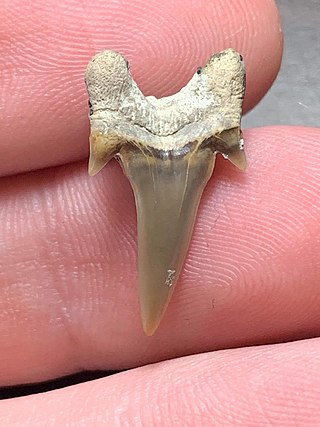Top Qs
Timeline
Chat
Perspective
Archaeolamna
Extinct genus of sharks From Wikipedia, the free encyclopedia
Remove ads
Archaeolamna (from Greek arche which turned into archaeo and Lamna, an extinct shark genus)[2] is an extinct genus of mackerel sharks that lived during the Cretaceous. It contains three valid species (one with two subspecies) which have been found in Europe, North America, and Australia.[7][8] While it is mostly known from isolated teeth, an associated set of teeth, jaws, cranial fragments, and vertebrae of A. kopingensis is known from the Pierre Shale of Kansas.[7] Teeth of A. k. judithensis were found with a plesiosaur skeleton with bite marks from the Judith River Formation of Montana.[2] It was a medium-sized shark with an estimated total body length of 3–4 metres (9.8–13.1 ft).[9]
Archaeolamna likely had an antitropical distribution, being found in the temperate waters of both hemispheres but absent from the tropical waters around the equator, much like the modern porbeagle shark. A similar distribution has been found for the related Cardabiodon.[7]
Remove ads
Taxonomy
When the family Archaeolamnidae was first named, it contained Archaeolamna, Cretodus, Dallasiella, and Telodontaspis.[1] However, Cretodus was reassigned to Pseudoscapanorhynchidae,[10] Dallasiella was reassigned to Lamniformes incertae sedis,[11] and Telodontaspis was synonymized with Cretoxyrhina.[12] This leaves Archaeolamna as the sole member of the family.
References
Wikiwand - on
Seamless Wikipedia browsing. On steroids.
Remove ads

